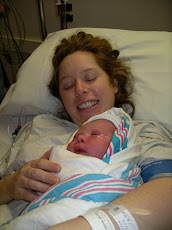My Pain is Not Your Pain
Reading the new book Birth Day by the ironically-named Dr. Mark Sloan (“Paging Dr. McSteamy from Gray’s Anatomy”), I was fascinated by the chapter on the history of the epidural and pain relief in child birth. The descriptions of old-timey remedies for labor pain were shocking. I can just picture one of my beleaguered ancestors screaming at her midwife 200 hundred years ago, “Where’s the damn viper fat!!!? I can’t take it anymore!”
We just finished reading the book for Silicon Valley Moms Book Club. Birth Day brought back my own vivid memories of childbirth and the judgment made by a complete stranger about my choices. As I learned, the last 400 years or so are full of episodes where men decided whether or not women should experience the full pain of childbirth or be knocked unconscious for it.
When I was pregnant with Rainman and living in New York, I experienced my first taste of Pregnancy Rage. The husband of a woman in my birthing class raised his hand to speak during our group discussion. “I don’t understand why any woman would not want drugs during labor”, he said belligerently. Why was he voicing an opinion on what other women (besides his heavily face-lifted second wife) chose to do about pain management? I had just told the group that I was doing Hypno-Birthing and hoped for a calm and drug-free delivery (I know, I know. Famous last words). Another woman had just admitted that she did not want drugs during labor because she had experienced some bad reactions to prescriptions painkillers. And that’s when Mr. Buttinsky decided to add his two cents.
Our nurse handled it beautifully, saying she thought that women who delivered without drugs were courageous, and that some women preferred avoiding the side effects for them and their babies. She made it clear that this was a big decision and described some of the pros and cons.
New research shows that redheads feel pain more strongly than others and require on average 20% more anesthetic than other-heads to block pain in dental procedures. My daughter, Red, may have to deal with this throughout her life. Mercifully, she will have choices when it comes to her own pain management if she has children, and I assume viper fat will not be one of them. I will do my best to prepare her for the waves of agonizing pain I experienced when my Pitocin-induced contractions began. I’ll also tell her what a blessing the epidural was for me and what a relief it was when the doctors told me we had to stop laboring and have a C-Section to get my giant 10-lb baby out.
I’ve decided to save my copy of Birth Day for Red because of its enlightening explanation of how difficult it is for our too-big human babies to pass through our too-small birth canals. I only wish I had read it before I had children. Reading the clinical description of a C-Section would have eased my fears about the surgery and put it all in context. Although there are many risks and a Cesarian is no walk in the park, the one thing I’m sure of is that it was right for me. After all, my pain is not your pain and my labor is not your labor.
























